We are sure that in your days in Edinburgh you will have some time to explore the most visited tourist attraction in Scotland, the Edinburgh castle. And here you will find every detail of this impressive fortification.
Location
In the first place your attention will be caught by its location. The Edinburgh castle resides on the top of the highest hill, where this fortress was build; could not be a more strategic election. The hill, Castle Rock, is a volcanic mountain that can only be accessed through the Esplanade, a huge paved square lying between the Royal Mile and the castle. The castle’s defence was quite easy, as the steep cliffs surrounding the hill could stop any enemy, leaving only a very exposed path to approach it. For greater difficulty, in the past there was a lake to the north of the castle (called Nor Loch), lately dried in the early 19th century to house the beautiful gardens of Princes Street.
History
If you want to know everything about the history of this castle, join us in this journey.
From Prehistory to Romanisation
According to some excavations carried out in the 1990s, Castle Rock could have been inhabited from very early ages. Some remains found on this hill are from the Bronze Age (9th century BC) and from different stages of the Iron Age (6th century BC onwards). Some even venture that the Castle Hill could be the place in Scotland that has remained occupied since earlier times, but it is something difficult to be proven. It is known that the inhabitants of this hill traded with Roman invaders. Roman brooches and pottery was found here. The Romans conquered and occupied the island of Great Britain (Britannia, for them) between the 1st and 2nd centuries AC. The commander of the conquest was General Gnaeus Julius Agricola and achieved it, although only partially, in just seven years. We say partially because the submission of the north of the island (which they may have called Caledonia and its borders matched roughly the contemporary Scotland) was not completed and Romans retreated to Hadrian’s Wall. It seems that, like those famous Gauls, Romans also found here some villages inhabited by irreducible Caledonians. And what did the Romans find when they arrived? According to some archaeologists, it is believed that in Castle Rock a ‘broch’, a circular tower built with solid stone, may have existed. Remains, more or less intact, can be visited today on the West and North of Scotland, such as the brochs of the islands of Lewis or Skye, or in the town of Mousa (Shetland). When the Romans approached this hill for their first time, it is likely that they saw a tower and the houses of the Votadini, as they called the Celtic people who inhabited this particular land around the firth of the Forth.
Early Middle Age
Only a few references to Castle Rock from the immediate times after the fall of the Roman Empire can be found in ancient literary works. The first is a Welsh poem where a town, Din Eidyn or “Eidyn’s fortress”, is mentioned. Experts suggest that this fortress could had been erected on Castle Rock. The next reference is found in the Irish Annals. In this text slightly later text Eidyn was besieged by the Anglo, a Germanic people who would conquer the entire region of Edinburgh. Probably these Anglo were the people of the kingdom of Northumbria, at least until England absorbed it in the 10th century. The first news of the existence of a castle in Edinburgh is John de Fordun’s account of the death, in 1093, of King Malcolm III. The difficulty is to determine the amount of trust that can be given to a text of the 14th century referring to events of nearly three hundred years earlier. According to De Fordun, the widowed queen Saint Margaret was a resident in the dubious “Castle of the Maidens”. Other contemporary stories appear not to confirm the existence of a castle here. In any case, and regardless the type or location of the building, Edinburgh was already at the time the residence of the royals. Already in the twelfth century, King David (the youngest son of Malcolm III) celebrated his first assembly of noblemen and clergy in the castle. As no remains survived, it is believed that many of the buildings and defences may been made in wood. There would have been only two buildings erected in stone, the Chapel of Saint Margaret, and a former church dedicated to Saint Mary. Saint Margaret’s Chapel is still the oldest building in Edinburgh and you can visit it on the top of Castle Rock. However, the church is gone forever, and you would find the National War Memorial of Scotland instead. At the end of that twelfth century, King William was kidnapped by the English king, who occupied the castle for twelve years. To recover it, he was forced to marry an English bride.
Lower Middle Age
The next century would also be marked by a misfortune. In 1286, King Alexander III died without offspring and the Scottish throne became vacant. King Edward I of England saw the opportunity to take it and he did so, initially for a short period of time. Ten years later he decided that he could invade and subdue the entire territory, unleashing the First Scottish War of Independence. The castle fell immediately and was fortified by the Welsh master builders in the payroll of the English king. When the English king died in 1307, England’s control over the occupied lands of Scotland weakened. On the night of March 14, 1314, Thomas Randolph recovered the castle. Apparently, thirty men led by a courageous soldier climbed the wall along the north face of Castle Rock. They managed to sneak in, surprise the guards and destroy its defences. Four months later, those Scottish soldiers defeated the English in the Battle of Bannockburn.
After the death of the famous Scottish king Robert the Bruce, England saw again the opportunity to invade this land. And again Edinburgh Castle was occupied by English forces in 1335 and fortified once again. This time the William Douglas, lord Liddesdale, the one who assumed the recovery. The ploy was different and may remind you of that mythical horse of Troy. The assailants disguised themselves as merchants carrying food to the garrison. They stopped the cart at the entrance to block the doors, so the castle can’t be closed, and a hidden troop hurried to enter. The attack ended with the Scottish victory and the castle was recovered by them. At the end of the Wars of Independence, King David II rebuild the castle and made it the headquarters of his government. At this stage the now missing Tower of David began to be built, where the Crescent Battery is found today.
Modern Age
Edinburgh Castle saw four centuries of conflicts and clashes between different kings, queens and rebels, with Mary I and Oliver Cromwell as probably the best known of the characters.
15th Century
The 15th century began with a new English attempt to besiege Edinburgh Castle. But the lack of supplies prevented their success and they had to withdraw. But the middle of that century, in 1437, castle’s walls witnessed chilling events. At that time, the fortress’ guardian was Sir William Crichton, a man who had long hoped to be the regent of the Scottish kingdom. In order to gain access to power, he had to weaken the main noble family in Scotland at the time, the Douglas. He invited the Earl of Douglas and his younger brother to the castle for a dinner. They accepted the invitation and attended, but they were killed in the Tower of David during the ‘Black Dinner’. The Earl’s supporters besieged the castle in retaliation, but failed to take revenge. During these years the area known today as Crown Square and the Royal apartments was built. Access to the castle was also improved with the building of the access street in the northeast side of the rock. More than anything the reason was to accommodate more modern artillery, that required more room to manoeuvre. In fact, the castle was increasingly being used as an arsenal and armament factory. Edinburgh would become the main foundry of Scotland. Unfortunately, very few firearms from this era came to this day. On the other hand, it is important to note that the royal family started to live outside the walls of the castle, until King James IV ordered a palace to be built in the East of the town, at the bottom of the hill and by the abbey of Holyrood. Therefore the role of the castle as a royal house would decline, and yet other buildings were added to the complex, such as the Great Hall, which was completed in the early 16th century.
16th Century
To give a tragic welcome to the new century, James IV died in a new battle against the English army, Flodden. Expecting that the English were to invade Scotland as a consequence of their victory, the Scottish government increased the castle’s defence and built a wall all around Edinburgh. After his father death in the battlefield, in 1517, King James V inherited the crown and kept it until his death, twenty-five years later. When this happened his daughter and only heir, known today as Mary Stuart, or Mary I of Scotland, was only one week old. Henry VIII of England tried to force a dynastic marriage to subdue the Scottish territory. To do this the English king tried to kidnap her on numerous occasions, until Henry II of France offered her protection. During these years, Edinburgh Castle was unharmed by the English attacks. Spoiler Alert! For all ‘Reign’ fans, the Netflix series, we are not responsible if they continue reading. Of course, for anyone who does not care about the story unravelling, you can explore more about Mary Stuart. In 1560, the regent and queen’s mum, Marie de Guise, widow of James V, dies. A year later Mary Stuart returns from France, also widow herself, to begin her reign, which would be marred by the religious conflicts of the powerful Scottish nobility.
Edinburgh Castle will be the location where the future King James VI was born. Her unsuccessful marriages and the revolts of the nobility would lead to her final confinement and exile. The captain of Edinburgh yielded the castle to Moray, the new governor, who took the power on behalf of the still infant James VI, and forced the abdication of Mary I. After this, there was a fierce fighting, for many months, between Mary’s supporters (Catholics) and those of her son James VI (Protestants).
The confrontation would involve Edinburgh Castle, which would be defended by a supporter of the cause of Mary, William Kirkcaldy de Grange. The siege (known as Lang Siege) lasted for two years, until the city, alongside with its castle, was handed over to the new king’s allies. But Grange did not want to leave it and began bombing the city. Almost without food or water, he withstood the attack of the enemy artillery. During twelve days of May 1573, 3000 projectiles were thrown by the Scottish army against the castle. Damages caused were very serious and the surrender would not wait. Grange and his brother were eventually punished by hanging.
17th Century
This century would be marked by the repairs of the castle. The levee, the new Crescent Battery and the Portcullis Gate were rebuilt. They didn’t miss the opportunity to give the castle a more palatial appearance, despite the fact that King Charles I still preferred to sleep in Holyroodhouse. This century would also be especially conflictive. There were the years of the civil war between the King’s supporters and the Presbyterian convenanters. These, led by Alexander Leslie, captured Edinburgh Castle twice. It was at this time when the levee was severely damaged and eventually demolished. In case this military pressure was insufficient, Oliver Cromwell also invaded Scotland in 1650, defeating the convenanters and taking Edinburgh Castle. Since 1660 to 1923, for nearly three centuries, the castle was a garrison, and yet continued to see military and political actions. Many nobles would be imprisoned here for their betrayal of the Crown or for religious disputes. The end of the 17th century would bring a new attempt of a siege. This time because of the stubbornness of the governor of the castle, the Duke of Gorgon, who did not recognise William of Orange as king of Scotland.
18th Century
Just as tense the 18th century started with the first Jacobite Uprising. Edinburgh Castle was the goal of a hundred Jacobites, but they were not able to get hold of it. Around 1720s and 1730s, Castle’s defences were crucially reinforced. From this time came most of the artillery and the bastions of the north and west sides of the castle. These improvements would be worth to withstand the last military action against their walls, the second Jacobite uprising of 1745. During the final years of that century and the beginning of the next, the Castle’s role was mostly that of a prison. Their vaults kept many prisoners of war from all the conflicts Britain faced, such as the Seven Years’ War, the United States War of Independence or the Napoleonic Wars. This time was chosen to build various military buildings to complete the castle, such as barracks, gunpowder caches and the Governor’s House.
Contemporary history
Since the 19th century the castle lost its function as a prison and became a national monument. Sir Walter Scott found and recovered the Crown Honours, which were believed lost, and the Mons Meg cannon was also returned by the Crown. In 1830, the castle opened for visitors. Many reforms were planned since the middle of that century, but only a few were carried out. At the beginning of the 20th century, the castle was used again as an eventual prison during the First and Second World War. From 1991, he went to the care of Historic Scotland and was appointed Scheduled Ancient Monument in 1993. Buildings and structures have the highest heritage protection in the United Kingdom. The Old (and the New) City of Edinburgh is also a World Heritage Site, registered by UNESCO in 1995, and is described in its declaration as “dominated by a medieval fortress”.
Buildings and areas of interest
As you have already learned, in addition to the castle, the fortress contains inside its walls a large number of buildings and areas that are worth discovering.
The esplanade
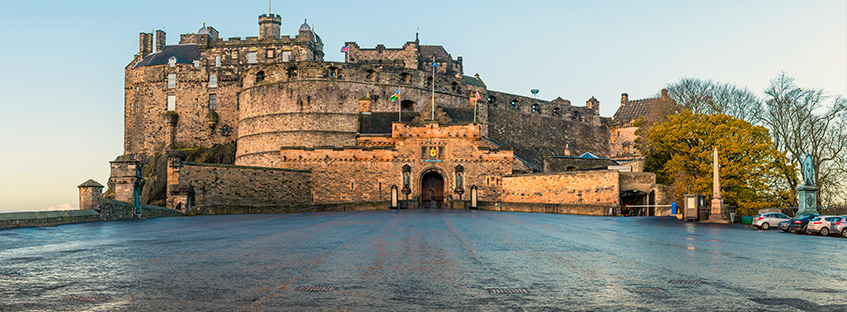
It is the first area where you will step on before entering the castle. As we have said, it is a wide paved square with a steep plane that connects the Royal Mile with the fortress. It is estimated that two hundred people accused of witchcraft were burned here between 1563 and 1722. The military parade known as Military Tatoo is held here every month of August. It is also a wonderful place for you to contemplate the views of the city and one of the most famous castle batteries, the Crescent Battery.
The gate
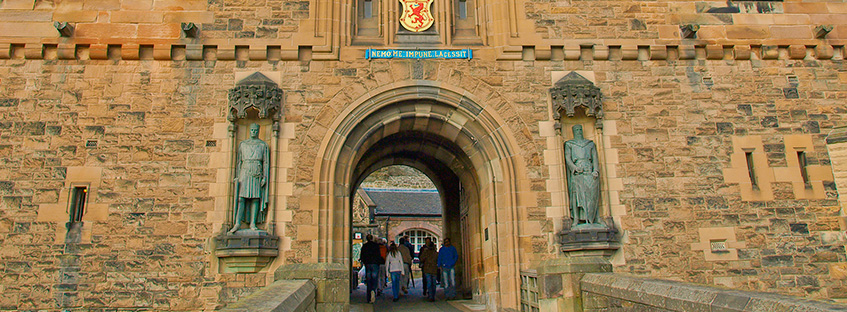
Surely you will be surprised by the magnificent entrance to the enclosure. It is flanked by the statues of Robert the Bruce and William Wallace, both leading to the Portcullis Gate, a 16th-century door that was built after the famous Lang Siege. Above this door is the Argyle Tower. It was named like this because inside the duke of Argyle was imprisoned prior to his execution. A little further on, following the line of the crenelated walls, you will see Argyle and Mills Mount cannon batteries. From here you can enjoy an unmissable panoramic view of the New Town. Ah! As part of the Mills Mount battery there is a famous cannon, the One O’Clock Gun, a cannon that detonates a daily signal at 1:00 p.m.
To the north and west of the Argyle tower lie the military buildings built in the 18th century. Among them, the Governor’s House and the lodgings of the military, now converted into museums, should be noted.
Saint Margaret’s Chapel
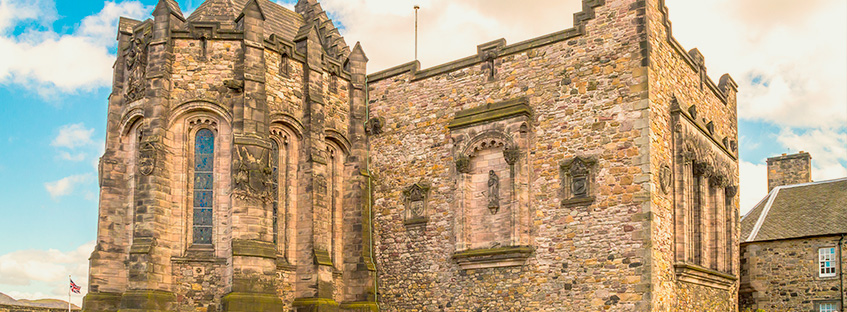
On the top of the hill there is a chapel consecrated to this Hungarian-born princess and Christian saint who married Scottish King Malcolm III back in 1070. The chapel has the honour of being the oldest building in Edinburgh. It is a Romanesque chapel, one of the very few buildings in this style that you will find in your visit to Scotland. Despite its name, the chapel was not built during Malcolm III’s reign, but probably later in the 12th century by David I. After the Protestant Reformation the chapel fall into disuse. It survived numerous sieges, became a powder warehouse at some point and was eventually restored in the mid-19th century.
Mons Meg and the Castle canyons
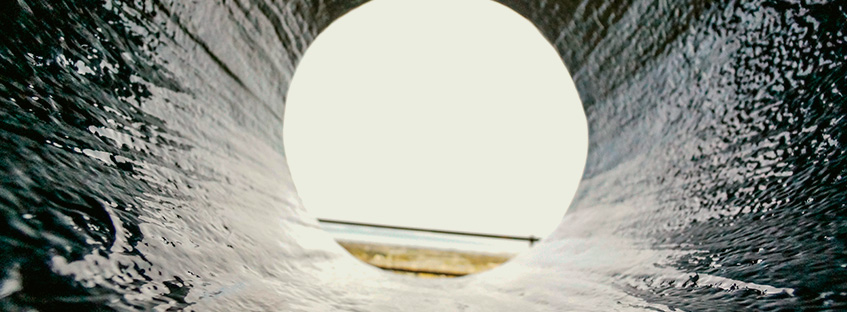
The Mons Meg is one of the best preserved siege cannons of the 15th century. It is an iron bombard commissioned by the Duke of Burgundy, Philip the Good, to Jehan Cambier of Mons (an artillery merchant) for 1536 pounds and 2 salaries. The cannon had, when built, a length of fifteen feet and a weight of more than fifteen thousand pounds. It was used in several clashes until in 1682 it exploded by accident. The piece that we see today was kept in the Tower of London until 1829, at which time Walter Scott mediated to get it returned to Scotland.
But in addition to this ancient bombard, Edinburgh Castle has an impressive collection of heavy weapons. Without going any further, the One O’Clock Gun was originally an 18-pound cannon that needed four men to be loaded. Over the years it was changed to one of 32 and another of 25 pounds. Today it is a light and modern weapon put into service in 2001. The idea of a cannon signalling the hour was by John Hewitt, an Edinburgh businessman who had seen a similar one in 1846 in the city of Paris. His idea prospered when a clock ball was placed on top of the Nelson Monument to serve as a visual signal to the ships that were sailing across the Firth of the Forth. Hewitt’s proposal to complement this visual reference with a sound signal was accepted and in June 1861 the first shot was made from Edinburgh Castle. Since then it has being fired daily at 1:00 pm, without interruption, except on Sundays, Good Friday and Christmas Day.
Crown Square
Most of the buildings in the top of the castle are arranged around Crown Square. It was built in the 15th century as the main courtyard of the castle, during the reign of James III. To the north of the square there are the National War Memorial and Scottish National Memorial. To the west the Queen Anne Building, while to the east is the Royal Palace. To the south, there is the Great Hall, built in the 15th century by James IV as a ceremony hall. It was used even as the seat for the Scottish Parliament until 1639. Oliver Cromwell used it as a barracks for his soldiers. After that military function the deterioration forced to reform it in the 19th century. The wooden beams roof are still the same as in the 16th century.
Castle Basements
The basements of the Castle are located just under the Great Hall, but are accessed through Crown Square. Over time the basements would perform different functions: jail, warehouse, bakery… Today you can see an exhibition reenacting the prisons of the 18th and early 19th centuries, the Prisons of War Exhibition. Inside you will admire numerous objects of French and American prisoners, including several gates with engravings made by themselves. As we said before, there were many wars in which the British Crown was implicated, leading to the imprisonment of more than a thousand prisoners in this location.
Royal Palace
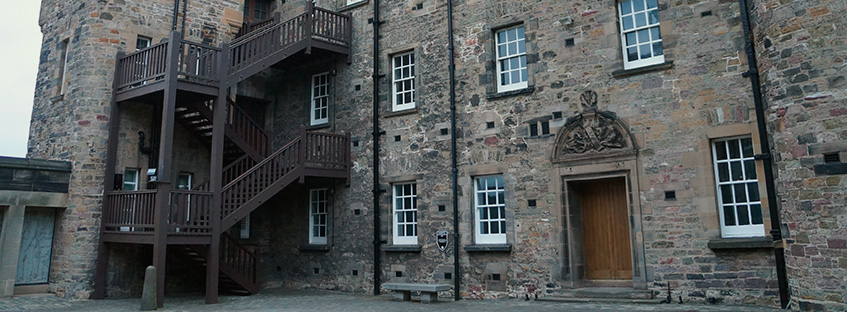
The Royal Palace was built in the mid-15th century, during the reign of James IV, and was connected to the tower of David. The building underwent several reforms, the most important being that of 1617, when the royal residences were built. Inside the palace is the Laich Hall, erected in 1671 to serve as a reception hall and dining room for James VI. Today it is still used for institutional events. In case it did not have enough historical significance, the room where Queen Mary I gave birth to the future King James VI, who would unite the two Crowns of Scotland and England in 1603, is just nearby. On the first floor you can also visit the rooms built in the 17th century to protect and house the Honours of Scotland, the Scottish Crown Jewels. They are of the great importance because they are the oldest in Europe. They are protected in a vault and their history is quite interesting. They were forgotten and lost until Walter Scott brought them to light in 1818. He was granted a permit to access the royal chambers to find the lost jewels, as they were hidden and locked. Another of the great symbols of the Scottish and British monarchy is the Stone of Destiny. It was used in the coronation ceremonies of the Scottish kings. After a long time at Westminster Abbey, London, it was returned to Scotland in 1996.
National War Museum of Scotland

The National War Museum of Scotland is a museum addressed to military history lovers, although it can also accommodate any curious person interested in history in general. It is located at the west end of the Castle, in what was once upon a time an old hospital. It is part of the National Museums of Scotland and covers four hundred years of the country’s military history. From the 17th century until our days. The exhibits contain all kinds of objects linked to war, from uniforms to weapons, including paintings, military portraits, etc. From time to time they also make temporary exhibitions that are worth visiting.
More information of interest
We want to briefly summarise some information that you need to consider before visiting Edinburgh Castle. Depending on the month you choose, opening times vary.
Between April and September it opens from 9:30 a.m. to 6:00 p.m. Between October and March, it is open from 9:30 a.m. to 5:00 p.m. It is closed on December 25th and 26th, and on January 1st it has a special schedule, from 11:00 a.m. to 5:00 p.m. Admission is £19.50 and gives you access to all the museums and exhibitions inside the fortress.
Also, keep in mind that Edinburgh Castle is one of the attractions included in the Explorer Pass, the tourist card that will save you a few pounds if you intend to visit several historical monuments and buildings throughout Scotland. In case you are interested about visiting the castle with one of our tour leaders, you can read all the information here. In case you prefer visit the castle on your own, you may prefer jump the line and buy the ticket in advance.
We hope that this Edinburgh Castle Guide has been very useful for you when planning your visit to the Scottish capital. If you have any questions or want to hire the guided tour of Edinburgh Castle, we will be happy to assist you.

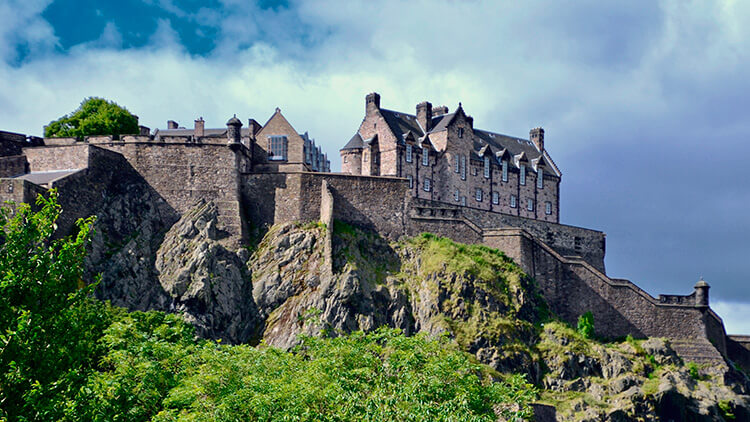
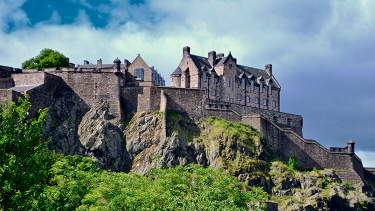
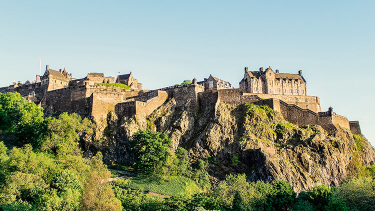
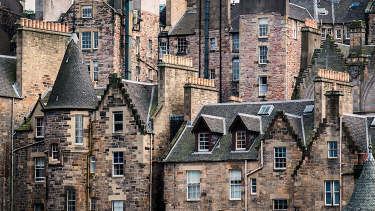
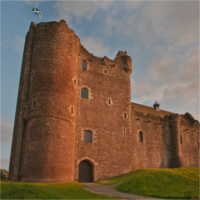
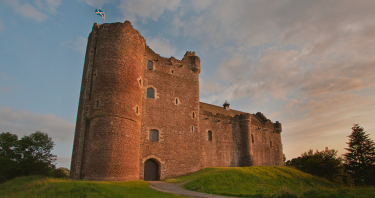
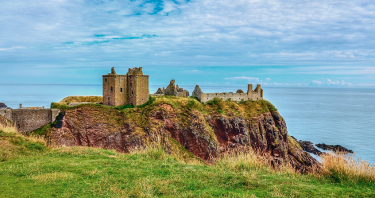
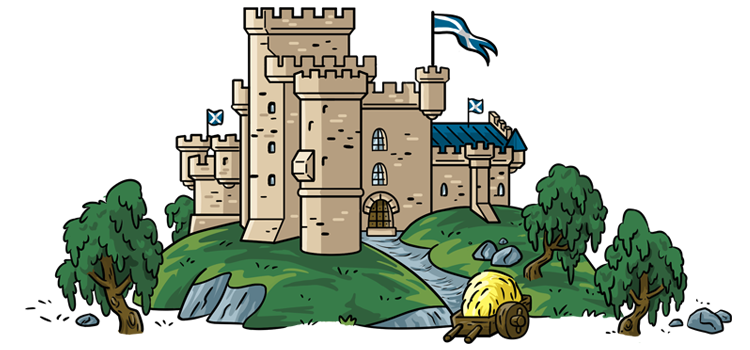









Previous comments...